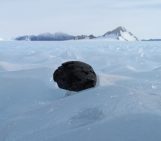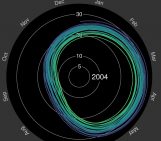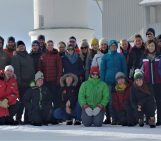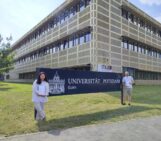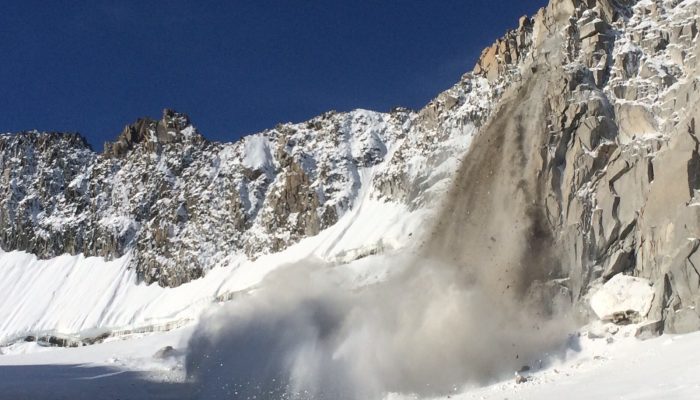
This photo captures a rockfall at the summit of Tour de Ronde, 3792 m above sea level in the Mont Blanc Massif. On 27 August 2015, around 15000 m3 of rock fell from the steep walls of the mountain.
Why do mountains crumble ?
Rockfalls such as the one on the photo have been linked to thawing permafrost. The exact mechanism that leads to these events is not fully understood, however, it is thought that areas of the mountain becoming destabilised during thaw periods (Luethi et al, 2015). Records show that during heat waves — as for instance the one that happened in the summer of 2015 in the Mont Blanc Massif — there are many more rockfalls than during colder years. Researchers at the Université Savoie Mont Blanc have been monitoring this area of the Alps for many years, installing a network of temperature sensors on the surface and in boreholes drilled into the rock to try and better understand the link between temperature and rock slope stability (see Magnin et al, 2015).
What can we do about it?
The short answer is that there is not a lot that can be done to prevent it. However, long term monitoring studies, such as the one from Magnin et al (2015), help to better understand what conditions are likely to result in rockfall activity and therefore predict when they are likely to happen. By doing this in the Mont Blanc region the team from Université-Savoie Mont Blanc has been able to put in place an alert network to warn the local community to increased rockfall activity. This means that the potential damage can be minimised, for example, by closing climbing routes in risky areas.
Further reading
Check out our blog post about how cryospheric research can transform lives.
- Magnin, F., Deline, P., Ravanel, L., Noetzli, J., and Pogliotti, P. (2015) : Thermal characteristics of permafrost in the steep alpine rock walls of the Aiguille du Midi (Mont Blanc Massif, 3842 m a.s.l), The Cryosphere, 9, 109-121, doi:10.5194/tc-9-109-2015
- , and , (2015) Modelling transient ground surface temperatures of past rockfall events: towards a better understanding of failure mechanisms in changing periglacial environments. Geografiska Annaler: Series A, Physical Geography, 97, 753–767. doi: 10.1111/geoa.12114
Edited by Emma Smith and Sophie Berger

